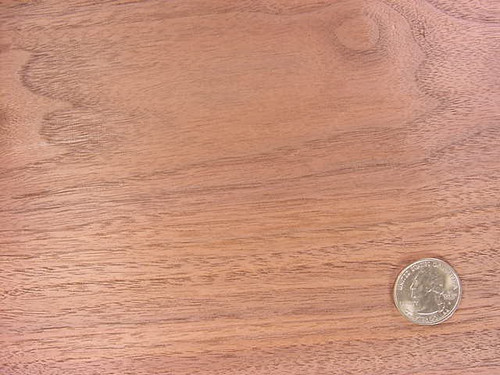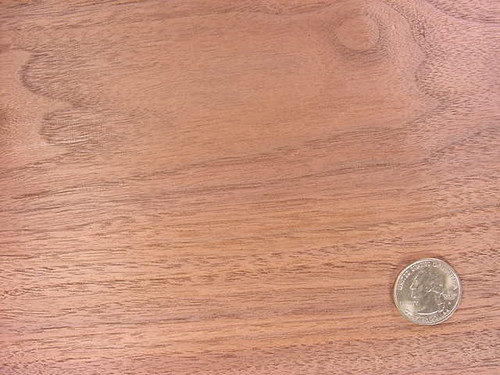Product Description
LUMBER SURFACED ON 4 SIDES TO SIZES SHOWN + or - 1/4Common Name(s): Black Walnut
Scientific Name: Juglans nigra
Distribution: Eastern United States
Tree Size: 120 ft (37 m) tall, 3 ft (1 m) trunk diameter
Average Dried Weight: 38 lbs/ft3 (610 kg/m3)
Specific Gravity (Basic, 12% MC): .51, .61
Janka Hardness: 1,010 lbf (4,490 N)
Modulus of Rupture: 14,600 lbf/in2 (100.7 MPa)
Elastic Modulus: 1,680,000 lbf/in2 (11.59 GPa)
Crushing Strength: 7,580 lbf/in2 (52.3 MPa)
Shrinkage: Radial: 5.5%, Tangential: 7.8%, Volumetric: 12.8%, T/R Ratio: 1.4
Color/Appearance: Heartwood can range from a lighter pale brown to a dark chocolate brown with darker brown streaks. Color can sometimes have a grey, purple, or reddish cast. Sapwood is pale yellow-gray to nearly white. Figured grain patterns such as curl, crotch, and burl are also seen.
Grain/Texture: Grain is usually straight, but can be irregular. Has a medium texture and moderate natural luster.
Endgrain: Semi-ring-porous; large earlywood pores grading to medium latewood pores, few; solitary and radial multiples of 2-3; tyloses occasionally to abundantly present; growth rings distinct; rays barely visible without lens; parenchyma banded (marginal), apotracheal parenchyma diffuse-in-aggregates (sometimes very faint and barely visible even with lens).
Rot Resistance: Black Walnut is rated as very durable in terms of decay resistance, though it is susceptible to insect attack.
Workability: Typically easy to work provided the grain is straight and regular.
Planer tearout can sometimes be a problem when surfacing pieces with irregular or figured grain. Glues, stains, and finishes well, (though walnut is rarely stained). Responds well to steam bending.
Odor: Black Walnut has a faint, mild odor when being worked.
Allergies/Toxicity: Although severe reactions are quite uncommon, Black Walnut has been reported as a sensitizer. Usually most common reactions simply include eye and skin irritation. See the articles Wood Allergies and Toxicity and Wood Dust Safety for more information.
Pricing/Availability: Very popular and widely available, though board widths can sometimes be narrow. Considered a premium domestic hardwood, prices are in the high range for a domestic species.
Sustainability: This wood species is not listed in the CITES Appendices or on the IUCN Red List of Threatened Species.
Common Uses: Furniture, cabinetry, gunstocks, interior paneling, veneer, turned items, and other small wooden objects and novelties.
Comments: It would be hard to overstate Black Walnut’s popularity among woodworkers in the United States. Its cooperative working characteristics, coupled with its rich brown coloration puts the wood in a class by itself among temperate-zone hardwoods. To cap it off, the wood also has good dimensional stability, shock resistance, and strength properties.
Product Videos
Custom Field
Product Reviews
1 Review Hide Reviews Show Reviews
-
Great Quality
From our first order in 2021 up until our most recent order in November 2024, all of the wood pieces we have received have been high quality. That's why we keep coming back!








